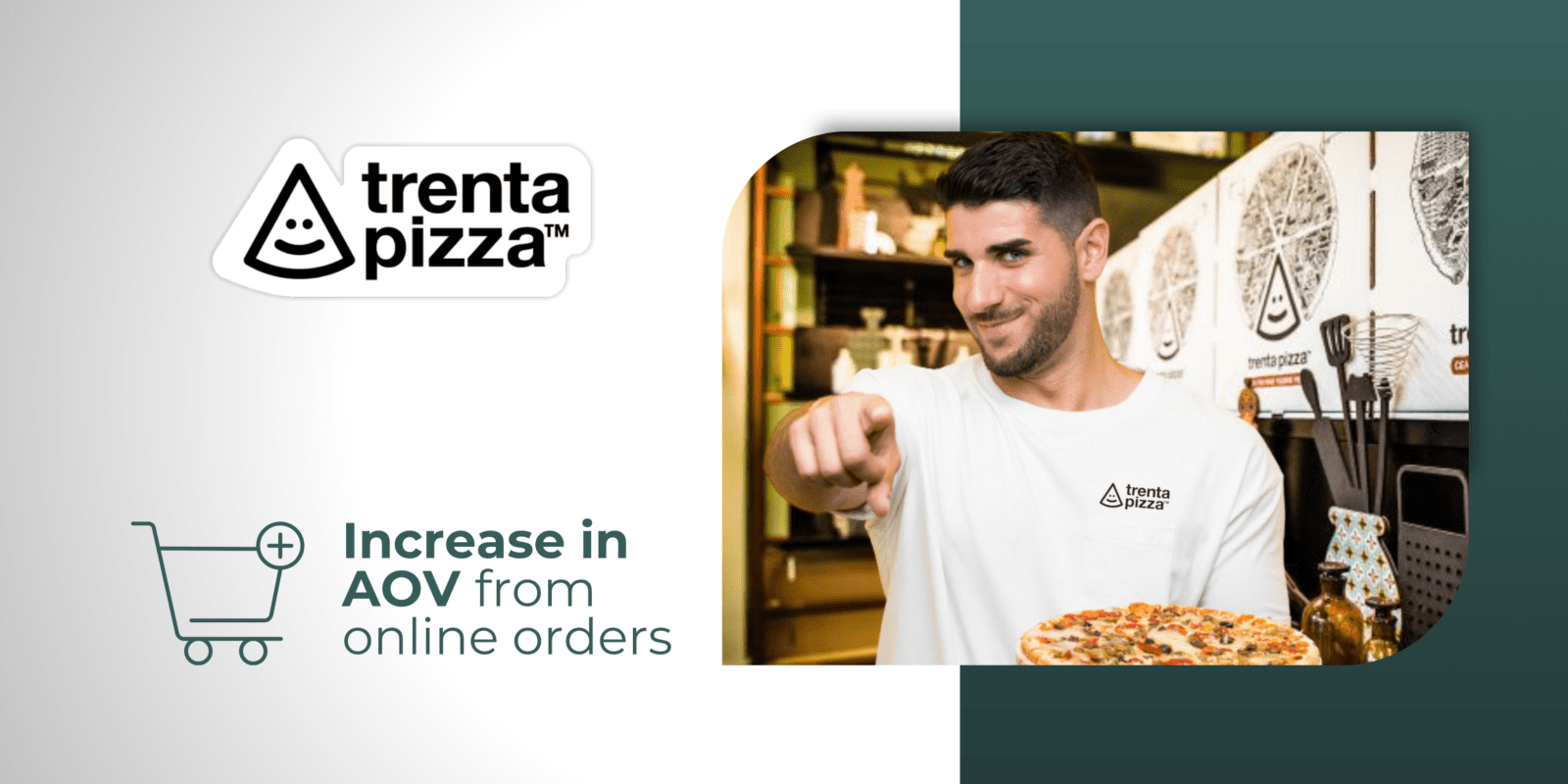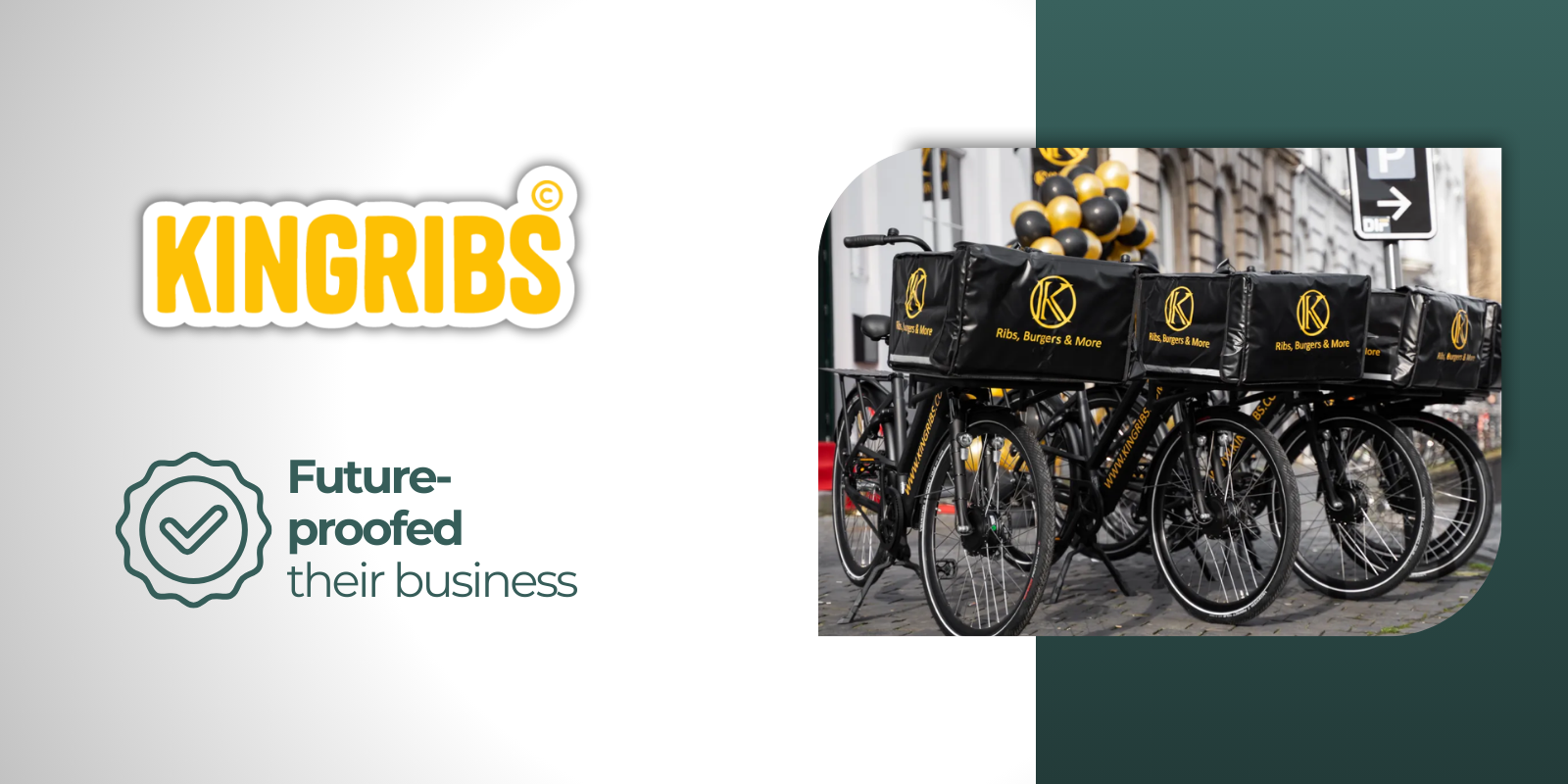

Kingribs is one of Belgium’s upcoming quick-service restaurant chains, known for its premium veal spareribs and admired for its loyal customer base. What started as a family passion for slow-cooked ribs has evolved into a fast-growing food brand, founded in 2016 by Alladin Zeidan, his father Gasser, and wife Cheyen in Berchem.
From his career experience at Pizza Hut, Alladin mastered operational discipline and agility at scale, which he brought to Kingribs along with a powerful brand vision, a recipe that has made Kingribs “Best National Chain in Belgium” at awards for the past two years.

Belgium
15+
Stores
QSR chain
Website, App, Point of Sale, Loyalty Program, Kitchen Display System, Delivery System, Self-Order Kiosk
Before moving to S4D, Kingribs was living the reality many growing QSR chains face today: trying to scale with a solution that isn’t built for multi-location chains.
Kingribs’ journey with technology had a few turns. Hoping to find a system that could scale with their multi-unit growth, they switched providers, but the move didn’t meet their expectations.
“The switch to the previous supplier was chaos. Within 48 hours, performance just fell off a cliff. I was doing it all alone, no dedicated team, no structured onboarding. I just knew it was never going to work out, so we stopped after two days,” Alladin recalled.
The previous experience made it clear Kingribs needed more than a tech supplier, they needed a partner with experience in moving multi-location chains to their solution, real support, and a tech stack that keeps innovating with the demands of a fast-growing chain, while also meeting Belgium’s legal requirement: Registered Cash Register System (Geregistreerd Kassasysteem / Système de Caisse Enregistrée). Commonly abbreviated as GKS in Dutch or SCE in French.
This consists of:
Kingribs’ biggest operational frustration was the inability to compare store performance easily. The old system only allowed them to see results for a single store at a time or for the entire network combined.
It was really intense and a lot of manual steps…,” Alladin explained. “If we wanted to know which unit sold the most cheeseburgers in a certain period, or how a special like the Flaming Hot Nacho Burger was performing in each location, we couldn’t easily get the data.
While Alladin knew that, for such a detailed data overview, they needed Power BI, their provider couldn’t deliver this.
You’d think accessing such data would be easy, but it just wasn’t,” Alladin said. “Their system just wasn’t built for it, no matter how much effort we put in.
This lack of detail and flexibility made it hard to measure campaign success, compare location performance, or tailor strategies to specific markets. And while some of this could be managed manually with 12–13 locations, Alladin knew that thinking and operating like a bigger chain was part of their growth trajectory.
Kingribs had more than 70% of their orders come from their most loyal, high-value customers, yet the majority of these orders were placed through third-party delivery platforms (Just Eat/Takeaway, Uber Eats, Deliveroo). This resulted in paying thefty commissions for Kingribs and customers.
They’re our customers, they love our brand, but we couldn’t own the relationship
Their previous system offered limited possibilities for incentives for customers to choose Kingribs’ channels over third-party delivery platforms. The so-called “app” was just a mobile web link with no loyalty program and no capability for targeted offers, app-only deals, or personalized touches like birthday rewards.
We know loyalty is important, especially for us because we’re not a discount brand,” Alladin explained. “We don’t do constant ‘buy one get one free’ like pizza chains. Our existing tools didn’t allow us to fully tap into the loyalty of our customer base, which is why we needed to change.
By taking a close look at the market and comparing all vendors during a board meeting, including Kingribs’ most important franchisees, it has become clear that S4D was the right solution for solving Kingribs’ challenges on a chainwide level and the operational day-to-day level in the restaurants.
Changing to a new system is never easy, but with a hands-on onboarding and proven processes, the transition was smoother than Kingribs expected. The S4D team worked closely with headquarters and stores teams, ensuring everything was up and running seamlessly.
Franchisees with lower tech confidence were supported step-by-step, making adoption easier regardless of their starting point. Shania van den Bos, Kingribs’ Head of Operations, stepped in as the in-house link between stores and S4D, ensuring every question was addressed quickly and effectively.
You don’t have to be super technical,” Shania laughed. “S4D does the heavy lifting; you just check the connections between the hardware and make sure it works.
And the partnership did not stop after roll-out. Weekly check-ins keep communication flowing, and the quarterly meetings bring fresh ideas from the S4D team that Kingribs can immediately put into action across its stores.
As Alladin noted, working with S4D not only improves operations today but also shapes the business’s long-term growth strategy.
Choosing S4D was a decision rooted in the strength of the eCommerce platform. Kingribs saw that to keep their customers, they had to offer a seamless ordering experience paired with loyalty features that actually reward repeat visits. It was an investment they knew would pay off more if made now rather than later.
The results were immediate. The app became more than just a mobile presence; it turned into a true loyalty engine and will be the new focus point with exclusive offers, app-only deals, and the foundation for targeted rewards. The app connects seamlessly with in-store touchpoints, so a customer logged in on the app can also be identified at the Self-Order Kiosk, unlocking the same personalized rewards experience everywhere.
They’re our customers, we should own the relationship,” Alladin said. “Now we have the tools to make it happen, and customers are telling us they love the new website because it’s clearer, easier, and makes ordering a better experience.
Kingribs is seeing a positive change on the operational side of things, starting with how the Point of Sale (POS) looks and works. All orders come directly into the Kitchen Display System (KDS) from POS, Self-Order Kiosk, Website, App, and Delivery Platforms.
Since Kingribs offers both delivery and eat-in, the Self-Order Kiosk plays a crucial role, allowing customers to place orders themselves without relying on staff. The app complements this by recognizing customers, letting them collect and redeem loyalty points seamlessly across channels.
In the busier units, it’s just less intense to run a busy shift now,” Shania shared. “Before, there was so much visual noise, you saw every single order, all at once. Now, if an order is done, it disappears from the live orders view. It’s a small detail, but it makes a big difference.
Every store now has its own dashboard, giving managers real-time visibility into orders, sales, and menu performance. Historical trends, product-level insights, and leaderboards make it easy to compare units, spark friendly competition, and share best practices. Instead of operating in isolation, each store can see the performance of other stores and feel part of a connected, ambitious chain.
With the software change, Kingribs has also set its sights on improving delivery data and service. With S4D’s Driver App, Kingribs can track exactly which driver delivered each order, update in real-time the ETA towards the customer (AI), and respond faster if something goes wrong.
Building on that foundation, Kingribs is now launching Power BI to dive even deeper into the performance chain-wide and on the store level.
Kingribs is now confidently equipped to execute on its biggest opportunity: moving their most loyal brand fans off third-party platforms and into their own platform.
With the new platform, one of the most exciting moves is the rollout of Mad Fries, a new brand designed to reach a customer segment that Kingribs had been missing. Mad Fries will give them a fresh, more accessible entry point into the Kingribs ecosystem, all powered and managed within the S4D platform.
At the same time, Kingribs is working closely with S4D to fine-tune their Power BI setup, ensuring it delivers the deepest possible insights into store performance, operational bottlenecks, and campaign effectiveness. They’re also preparing to roll out S4D’s inventory management tool, which will give them tighter control over high-margin products like spareribs and allow them to protect profitability across the network.
As Alladin put it: “We’re happy we get to learn from S4D’s system and from the experience of S4D’s larger partners. We can take those learnings into our own processes.”
“We just know we are in good hands with S4D, for now and for the future,” Alladin concluded.